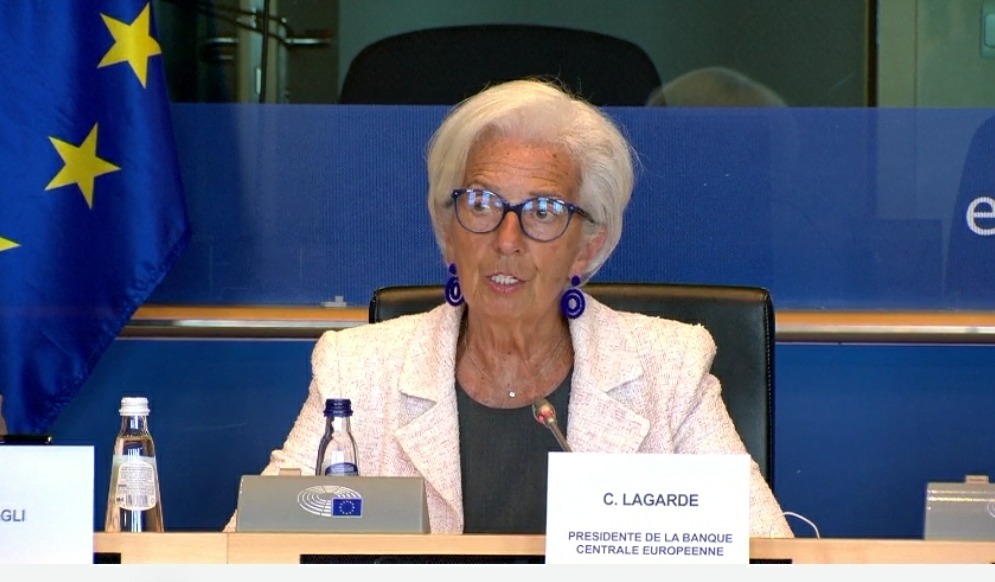
ECB raises the three key interest rates by 25 basis points
Staff Writer
Issuing its Monetary Policy Decisions, on July 27, the European Central Bank (CEB) has announced that it has decided to raise three key interest rates by 25 basis points to ensure inflation returns to its 2% medium-term target in a timely manner. The decision reflects the Governing Council’s assessment of the inflation outlook, underlying inflation dynamics, and monetary policy transmission strength. The Governing Council (GC) expects inflation to drop further over the remainder of the year but remain above target for an extended period.
“The past rate increases continue to be transmitted forcefully: financing conditions have tightened again and are increasingly dampening demand, which is an important factor in bringing inflation back to target,” it states.
The GC will continue to follow a data-dependent approach to determining the appropriate level and duration of restriction, based on its assessment of the inflation outlook, underlying inflation dynamics, and monetary policy transmission strength. The remuneration of minimum reserves will be set at 0%, preserving the effectiveness of monetary policy and ensuring full pass-through of interest rate decisions to money markets.
The GC plans to reinvest principal payments from maturing securities purchased under the Asset Purchase Programme (APP) and Pandemic Emergency Purchase Programme (PEPP) until at least the end of 2024. It will continue applying flexibility in reinvesting redemptions in the PEPP portfolio to counter risks related to the pandemic. It will also regularly assess how targeted lending operations contribute to its monetary policy stance.
GC is prepared to adjust all instruments within its mandate to ensure inflation returns to its 2% target over the medium term and preserve the smooth functioning of monetary policy transmission. The Transmission Protection Instrument is available to counter unwarranted, disorderly market dynamics that pose a serious threat to the transmission of monetary policy across all euro area countries, allowing the GC to more effectively deliver on its price stability mandate.
Christine Lagarde, President of the ECB, in her speech to the media in the afternoon, discussed the ongoing decline in inflation and the need to ensure it returns to its 2% medium-term target.

She said, the developments since the last meeting support the expectation that inflation will drop further over the remainder of the year but will stay above target for an extended period. While some measures show signs of easing, underlying inflation remains high overall. The ECB will continue to follow a data-dependent approach to determining the appropriate level and duration of restriction, based on the incoming economic and financial data, the dynamics of underlying inflation, and the strength of monetary policy transmission.
The remuneration of minimum reserves will be set at zero percent, preserving the effectiveness of monetary policy and improving the efficiency of monetary policy by reducing the overall amount of interest needed to implement the appropriate stance.
“The near-term economic outlook for the euro area has deteriorated, owing largely to weaker domestic demand. High inflation and tighter financing conditions are dampening spending. This is weighing especially on manufacturing output, which is also being held down by weak external demand. Housing and business investment are showing signs of weakness as well. Services remain more resilient, especially in contact-intensive subsectors such as tourism. But momentum is slowing in the services sector. The economy is expected to remain weak in the short run. Over time, falling inflation, rising incomes and improving supply conditions should support the recovery,” she said.
The labor market remains robust, with the unemployment rate at its historical low of 6.5% in May and many new jobs being created, especially in the services sector. However, forward-looking indicators suggest that this trend might slow down in the coming months and may turn negative for manufacturing. As the energy crisis fades, governments should roll back related support measures promptly and in a concerted manner to avoid driving up medium-term inflationary pressures, which would otherwise call for a stronger monetary policy response.
In respect of indicators of inflation she said that Inflation came down further in June, reaching 5.5%, after 6.1% in May. Energy prices fell again, dropping by 5.6% year on year. Food price inflation continued to slow but remained high at 11.6%. Inflation excluding energy and food edged up to 5.5% in June, with goods and services following diverging trends. Goods inflation decreased further, to 5.5%, from 5.8% in May, while services inflation rose to 5.4%, from 5.0% in May.
The drivers of inflation are changing, with external sources of inflation easing and domestic price pressures becoming increasingly important drivers. Although most measures of longer-term inflation expectations currently stand at around 2%, some indicators remain elevated and need to be monitored closely.
Economic growth and inflation remain highly uncertain, with downside risks to growth including the Ukraine war and increased geopolitical tensions. Growth could be slower if monetary policy effects are more forceful than expected or if the world economy weakens, dampening demand for euro area exports. On the other hand, growth could be higher if the strong labor market, rising real incomes, and receding uncertainty make people and businesses more confident and spend more.
Upside risks to inflation include potential upward pressures on energy and food costs, as well as adverse weather conditions. A lasting rise in inflation expectations above the target or higher than anticipated increases in wages or profit margins could drive inflation higher, including over the medium term. On the other hand, weaker demand, such as a stronger transmission of monetary policy, would lead to lower price pressures, especially over the medium term.
Financial and monetary conditions are also influenced by monetary policy tightening, with risk-free interest rates increasing and funding becoming more expensive for banks. The large TLTRO (longer-term refinancing operations) repayment in June went smoothly, but the annual growth rate of lending continued to decrease in June, falling to 3.0% for firms and 1.7% for households, the President stated.

